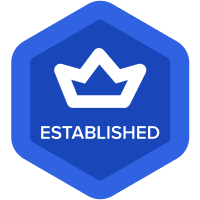Reports, Boards and Worksheets–When to use which?
[Updated July 2021 with the new Management Reporting feature]
As you are embarking on the UX journey, you may ask yourself: When should I use a board? When should I use a worksheet? And, When should I use a Report?
This article is here to help you make the best decision.
High-level view
Report
The report page is used when a more static layout is required, with focused visuals, narrative and a high-level of standardized information.
We recommend using it for the following:
- Grab decision-makers attention
- Tailored to executives and managers
- Focus attention on what matters
- Pixel perfect visuals
- Professional presentations that can be printed or presented live
We do not recommend it for:
- Data editing and input; reports are for presentation only
- Viewing large data sets
Board
The board page is used for data visualization and editing in a highly polished way.
We recommend using it for the following:
- KPI review
- Graphical, visual reporting
- Viewing data
- Reviewing related data from multiple modules
- Call-outs of specific metrics
- Landing pages
We do not recommend using it for the following:
- Reviewing large data sets
- Editing large data sets
- Inputting multiple rows of data
If you are in this scenario, have a look at the worksheet page.
Worksheet
Though not recommended for reporting, worksheets are best used to highlight a specific data set where an end user can edit data and complete planning activities with insights on supporting information.
We recommend using for:
- Entering or editing data
- Reviewing large, detailed, data sets
- Filtering large data sets
- Running actions on data sets
We also highly encourage you to leverage the Insights Panel functionality, which gives users extra information and context. They can access cards for details about their data and use the quick links to navigate between Pages.
Let's deep dive
Depending on what you want to achieve, here are our recommendations:
| Objectives | Recommended Page Type |
|
Executive summary |
Report page: Use the slick look and feel of professional reporting pages; the pixel-perfect definition allows you to highlight information in a customized way.
Board page: Use a combination of KPI cards, charts, and tables depending on what data you want to show. |
|
Variance reporting |
Report page: Use the pixel-perfect functionality combined with the ability to hide headers to build a butterfly report.
Board page: Use a board page to show high-level variance reporting. Boards could be set up with both the table showing the variance and a graph to accompany it. Use KPI card to show high-level totals.
Worksheet page: Use a worksheet if you intend to show one primary grid and want the grid to take up the whole screen. If users are selecting what to compare for version 1 and version 2 view, use a card on the insight panel. The insight panel can also be used to show trends or other graphical views of the variance. |
|
Data import, map, and validate |
Board page: Add grid cards for data validation and action cards for imports. Worksheet page: If this is a large set of data and any additional input is needed from the end users, this will be better suited to a worksheet page. |
|
Hierarchy maintenance Updating lists |
We recommend maintaining hierarchies through modules and actions rather than directly in lists, which can be done in the new UX (through forms) as well as using import actions created in Classic and surfaced in the new UX using an action button. |
| Documentation |
Board page: Use text cards with details and directions on how to use the application. Use links from text card titles to other worksheet and board pages for navigation. |
What about other reporting options?
|
When you want to… |
Report |
Board |
Worksheet |
Add-Ins |
BI Tool |
|
Get real time updates |
✅ |
✅ |
✅ |
||
|
Present in meetings |
✅ |
|
✅ |
||
|
Print to fixed layout multipage PDF |
✅ |
✅ |
✅ |
||
|
Ad hoc number calculations |
✅ |
✅ |
|||
|
Include non-Anaplan data |
|
✅ |
✅ |
||
|
Enter /update data |
✅ |
✅ |
Write Back |
||
|
Execute data import/map/validate |
✅ |
✅ |
|||
|
Provide executive summaries |
✅ |
✅ |
✅ |
✅ |
|
|
Allow dynamic variance reporting |
✅ |
✅ |
✅ |
||
|
Use free-form layouts |
✅ |
✅ |
|||
|
Embed data into narrative text |
✅ |
✅ |
|||
|
Design highly engaging pages using layered elements |
✅ |
✅ |
Depending on Tool |
||
|
Customize tables colors and style |
✅ |
✅ |
✅ |
In summary
Let's recap:
|
End-user objectives |
Report |
Board |
Worksheet |
|
Review high-level KPIs |
✅ | ✅ |
Insights Panel |
|
Analyze high-level data |
✅ | ✅ | Insights Panel |
|
See advanced formatting and charts |
✅ | ✅ | |
|
Compare data from multiple modules |
✅ | ✅ | ✅ |
|
View nested tables as a butterfly report |
✅ | ||
|
Navigate through fixed page layout design |
✅ | ||
|
Review detailed data |
✅ | ||
|
Edit large data sets |
✅ | ||
|
Filter large data sets |
✅ | ||
|
Drill down to detailed data |
✅ | ✅ | |
|
Pivot data |
✅ | ✅ | |
|
Change grid size |
✅ | ✅ | |
|
Use forms and actions |
✅ | ✅ | |
|
Switch between different grids/charts on a page |
✅ |
Which pages are you using in your planning ecosystem?
Let us know your thoughts in the comments below.
Comments
-
@annejulie Awesome article.
For me, it comes down to the context selectors. If I need a customized selector or I need to synchronize my "insights" or there are multiple grids that facilitate a workflow, I usually lean towards a page.
1 -
Good article, but I still miss one very essential topic: Planning!
A good planning toolbox will require bits and pieces of everything, from inputs on slightly larger grids to simple review graphs.
NUX still gives me great challenges with this, ending too often in an odd compromise that either lacks user friendliness or misses out on the process.
Reporting is great though! 😎
1 -
Awesome. Everything is quite concise and useful! Heap Thanks for this. 👍
0







